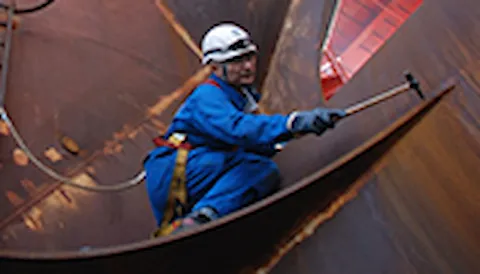Advanced simulation modelling
Services that address complex fluid flow challenges
For over two decades, DNV has delivered advanced, risk- and consequence-based computational fluid dynamics (CFD) solutions to the global energy sector. Our comprehensive approach combines industry-leading CFD software with deep technical expertise to validate critical design decisions, enhance safety, and support regulatory compliance with confidence.
With strong links to DNV's Spadeadam Research and Testing Facility, we have unique insight into the validity and suitability of CFD model applications for new fuels and technologies. Understanding the output from CFD models for applications that are outside the validation scope can lead to predictions that may deviate from reality. Without relevant example data for users to sense-check their models against, appropriate validation, or guidance on how CFD should be implemented, trust in the output is eroded.
DNV supports companies at the forefront of adopting new fuel technologies for carbon capture, hydrogen, ammonia and battery energy storage systems (BESS) to safely navigate the energy transition. By applying advanced CFD, we simulate real-world scenarios with high accuracy to support informed design decisions. From predicting the impact of fires and explosions to modelling cryogenic spills and gas dispersion, our CFD-driven approach enables you to evaluate performance under challenging conditions, optimize designs, and reduce capital costs without relying on overly conservative assumptions from simplified models.
For the highlighted service offerings, we provide an integrated risk solution that leverages our multi-disciplinary capabilities in CFD and technical safety.
Carbon capture and storage:
- Dense (and vapor) phase CO2 dispersion modelling on simple and complex terrain/geometries
- Subsea CO2 dispersion modelling
- Low temperature impact
Hydrogen production:
- Enclosed H2 ventilation, dispersion and explosion modelling, considering DDT likelihood and lightweight H2 explosion venting panels (aligned with Spadeadam test data).
- H2 electrolyze ventilation, dispersion and explosion modelling
- Probabilistic explosion modelling
Alternative fuels (ammonia):
- NH3 dispersion modelling for maritime includes mitigation measures such as water curtains
Battery energy storage systems (BESS):
- Fire, explosion and off gas dispersion modelling to produce toxic and smoke plume dispersion supporting planning applications and layout/design validation
- CFD model validation against burn tests
FLNG, FPSO, and oil & gas industries:
- Probabilistic fire and explosion modelling
- Fire and gas detector layout optimization (CFD- and geometry-based)
- Exhaust gas and turbulence analysis for helideck impairment
- Structural response analysis and passive fire protection optimization
- Incident investigation
- Particle transportation and erosion modelling
Critical national infrastructure:
- Substation and transformer fire, explosion and smoke plume modelling
- High-explosive blast modelling
Flow assurance:
- Multi-phase (gas/liquid/solid) separation
- Cool-down time assessment for subsea production systems
- Detailed temperature modelling
- Corrosion and materials selection
- Pressure loss in complex geometries
- Prediction of conditions leading to hydrate and paraffin/wax formation (advanced multiphase simulations)
- Slug flow
- Flow-induced forces on valves and other piping components
- Wall shear stress modelling
- Sand and solids transport.




